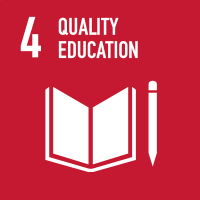Studying at the University of Verona
Here you can find information on the organisational aspects of the Programme, lecture timetables, learning activities and useful contact details for your time at the University, from enrolment to graduation.
Study Plan
This information is intended exclusively for students already enrolled in this course.If you are a new student interested in enrolling, you can find information about the course of study on the course page:
Laurea magistrale in Tradizione e interpretazione dei testi letterari - Enrollment from 2025/2026The Study Plan includes all modules, teaching and learning activities that each student will need to undertake during their time at the University.
Please select your Study Plan based on your enrollment year.
1° Year
| Modules | Credits | TAF | SSD |
|---|
1 module among the following2 modules among the following1 module between the following2° Year activated in the A.Y. 2023/2024
| Modules | Credits | TAF | SSD |
|---|
1 module among the following2 modules among the following1 module among the following| Modules | Credits | TAF | SSD |
|---|
1 module among the following2 modules among the following1 module between the following| Modules | Credits | TAF | SSD |
|---|
1 module among the following2 modules among the following1 module among the following| Modules | Credits | TAF | SSD |
|---|
Legend | Type of training activity (TTA)
TAF (Type of Educational Activity) All courses and activities are classified into different types of educational activities, indicated by a letter.
Introduction to ancient Near Eastern literature (m) (2023/2024)
Teaching code
4S007407
Teacher
Coordinator
Credits
6
Language
Italian
Scientific Disciplinary Sector (SSD)
L-OR/01 - HISTORY OF ANCIENT NEAR EAST
Period
CuCi 2 A, CuCi 2 B
Courses Single
Authorized
Learning objectives
The course is meant as an introduction to the study of a complex culture where writing had its origin, and various expressive forms were created – such as mythological compositions, devotional and wisdom literature, heroic and historiographic narrative, etc. The wide spectrum of Near Eastern literatures includes different languages spoken in the various areas where cuneiform script spread and was used since the III millennium BC. Phenomena of transmission are evident in contemporary and successive cultures during the II and I millennia BC. The course aims at providing a general introduction to the genres and main literary works of Near Eastern literatures with particular reference to the Mesopotamian (Sumero-Akkadian) tradition and to illustrate the contexts of production and reception of the most representative texts, the dynamics of their transmission, canonization and innovation. Through the illustration of the characteristics of Sumero-Akkadian literature and its relationships with other cultures, the course also provides an important complement to the study of ancient literature of the Mediterranean area.
Prerequisites and basic notions
Basic linguistic competence and historical and literary knowledge. Specific competence in the Near Eastern languages is not required.
Program
The course is aimed at offering an overview of the vast Mesopotamian literary production, starting from a historical introduction to the activity of scribal production, the formation of the Sumero-Akkadian tradition, and its diffusion. Some literary genres and particularly representative works are examined, such as dialogic and sapiential texts, and poems such as the Flood and Gilgamesh, considering the contexts of their production, reception and re-elaboration. The reference texts indicated in the bibliography will be integrated during the course with the presentation of sources and discussion of some examples of secondary literature; it will also be specified which parts of the manuals the student will have to study.
Bibliography
Didactic methods
The course includes a series of lectures for the presentation of the arguments, the guided reading and commentary on the sources. Summaries of the topics covered will be uploaded to the e-learning platform of the course for easier framing of the topics and periods covered in the lessons and manuals.
Learning assessment procedures
The exam will consist of an oral test aimed at verifying the acquisition of knowledge and terminology. The exam will consist of a series of questions on the topics covered during the course, on the study of bibliographic materials, the texts addressed, and what is provided on the e-learning platform. Non-attending and Erasmus students are kindly requested to contact the teacher at the beginning of the course to agree on the program and exam methods.
Evaluation criteria
The evaluation concerns: the acquisition of the specific language skills covered by the course, the ability to organize and apply the acquired knowledge and methodologies, correctness and expository properties.
Criteria for the composition of the final grade
The evaluation is expressed in thirtieths.
Exam language
italiano

